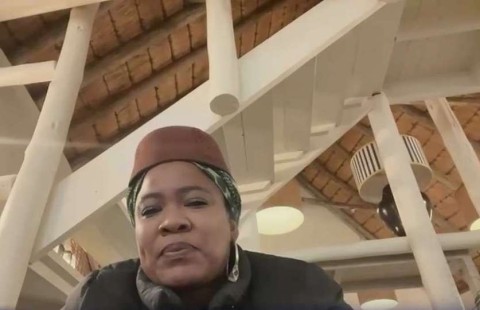US Federal Reserve split on whether to hedge on inflation, or proceed with cuts - The Business Times
[WASHINGTON] The close split at the US Federal Reserve over whether to keep hedging against inflation risks or move forward faster with rate cuts came through on Friday (Jun 20) in the first public comments from policymakers following a decision this week to hold borrowing costs steady for now.
Rising tariffs are expected to raise inflation over the rest of the year, with a new Federal Reserve monetary policy report on Friday concluding that higher import taxes had already raised inflation for goods, even if headline inflation, including services, remains weaker than expected in recent months.
But Fed governor Christopher Waller on Friday said he felt the inflation risk from tariffs was small, and the Fed should cut rates as soon as its next meeting in July, because recent price increases have been moderate while he sees some worrying signs for the job market such as a high unemployment rate among recent college graduates.
“Any tariff inflation ... I don’t think is going to be that big and we should just look through it in terms of setting policy,” Waller said on CNBC’s Squawk Box. “The data the last few months has been showing that trend inflation is looking pretty good ... We could do this as early as July.”
“I’m all in favour of saying maybe we should start thinking about cutting the policy rate at the next meeting, because we don’t want to wait till the job market tanks before we start cutting the policy rate,” Waller said.
In a Reuters interview, Richmond Fed president Tom Barkin took a more tempered view, arguing that with inflation still above the Fed’s 2 per cent target after a multi-year battle to contain it, key tariff debates still unresolved, and the unemployment rate at a low 4.2 per cent, there was no urgency to cut rates.
BT in your inbox

Start and end each day with the latest news stories and analyses delivered straight to your inbox.
“Nothing is burning on either side such that it suggests there’s a rush to act,” Barkin said. “I’m not in a mood to ignore a spike in inflation were it to come ... We will have to see if it comes.
“I’m comfortable with where we are ... Core inflation is still over target. Being modestly restrictive is a good way to address that.”
San Francisco Fed president Mary Daly had what may be an in-between view, telling CNBC late on Friday a rate cut in the fall would be “more appropriate” than a July move unless the labour market falters.
While tariffs could give rise to meaningful inflation, she said, there is “a lot to be said” for the view that businesses will find ways not to pass higher costs on to their customers, tempering any inflation impact.
The Fed should not be preemptive and needs to watch where the data goes, she said: But with data in hand showing both inflation and the job market cooling, “we cannot wait so long that we forget that the fundamentals of the economy are moving in a direction where an interest rate adjustment might be necessary”.
The job market is still solid, she said: But “we are at a point where additional softening could turn into weakening, which I don’t want to see, and we can’t allow for that to happen because we are waiting for inflation to pop up just around the corner.”
The Fed this week held its policy rate steady in the 4.25 to 4.5 per cent range where it has been since December.
The Trump administration says the tariffs will ultimately help the US economy, and the president has demanded the Fed slash rates immediately.
New Fed economic projections this week, by contrast, anticipate slower growth and higher inflation.
Those projections showed policymakers overall still anticipate rate cuts later in the year, a sign they do feel tariffs will raise prices but not in a persistent way.
Opinion, however, was closely divided in what Barkin called a “bimodal” split, with seven policymakers seeing zero cuts needed this year, and eight anchoring the median at two cuts, which aligns with investors’ view of quarter-point reductions at the Fed’s September and December meetings.
Though none of the three identified their specific rate views, their comments sketched their ongoing debate over how seriously and persistently US President Donald Trump’s efforts to recast global trade will influence the path of prices, jobs and growth in coming months.
In a Wednesday press conference, Fed chair Jerome Powell cautioned against putting too much weight on any particular outlook at this point, given how volatile the debate around trade has been and how many key decisions remain outstanding.
Powell testifies in Congress on Tuesday and Wednesday of next week as part of regular semiannual hearings on monetary policy, which in this case follows a week of insults from Trump and demands to cut rates, and nervous chatter on Wall Street about the president’s plans for the Fed when Powell departs next May.
Powell on Wednesday seemed content to wait for more data before resuming rate cuts.
“For the time being, we are well-positioned to wait to learn more about the likely course of the economy before considering any adjustments to our policy stance,” Powell told reporters. REUTERS












